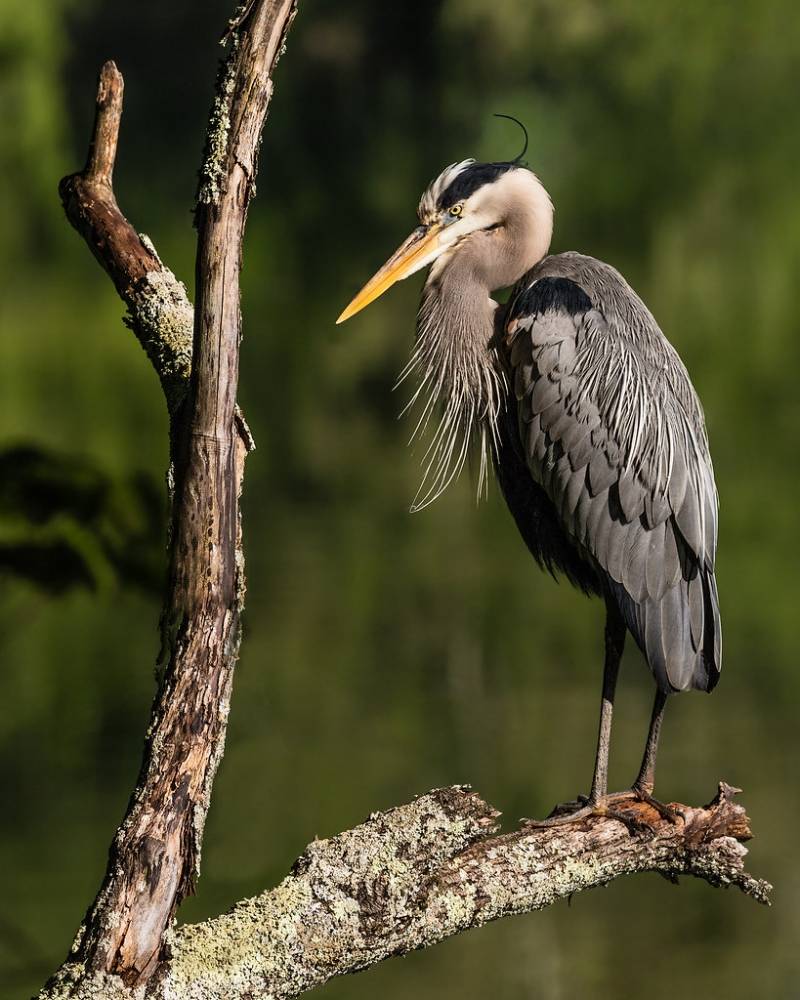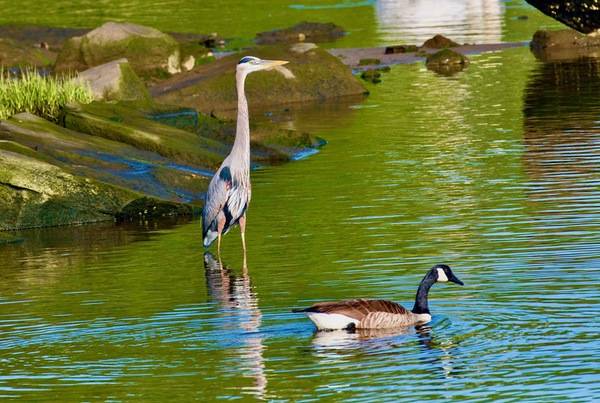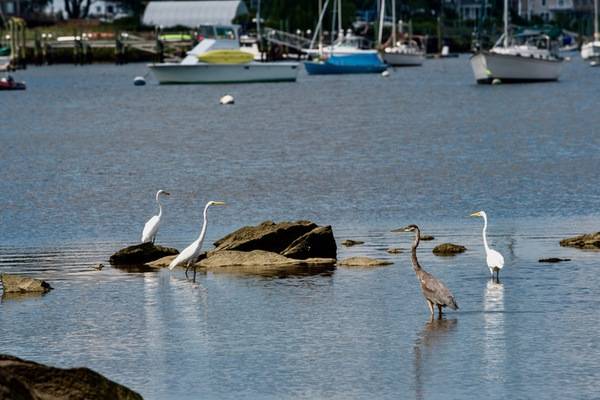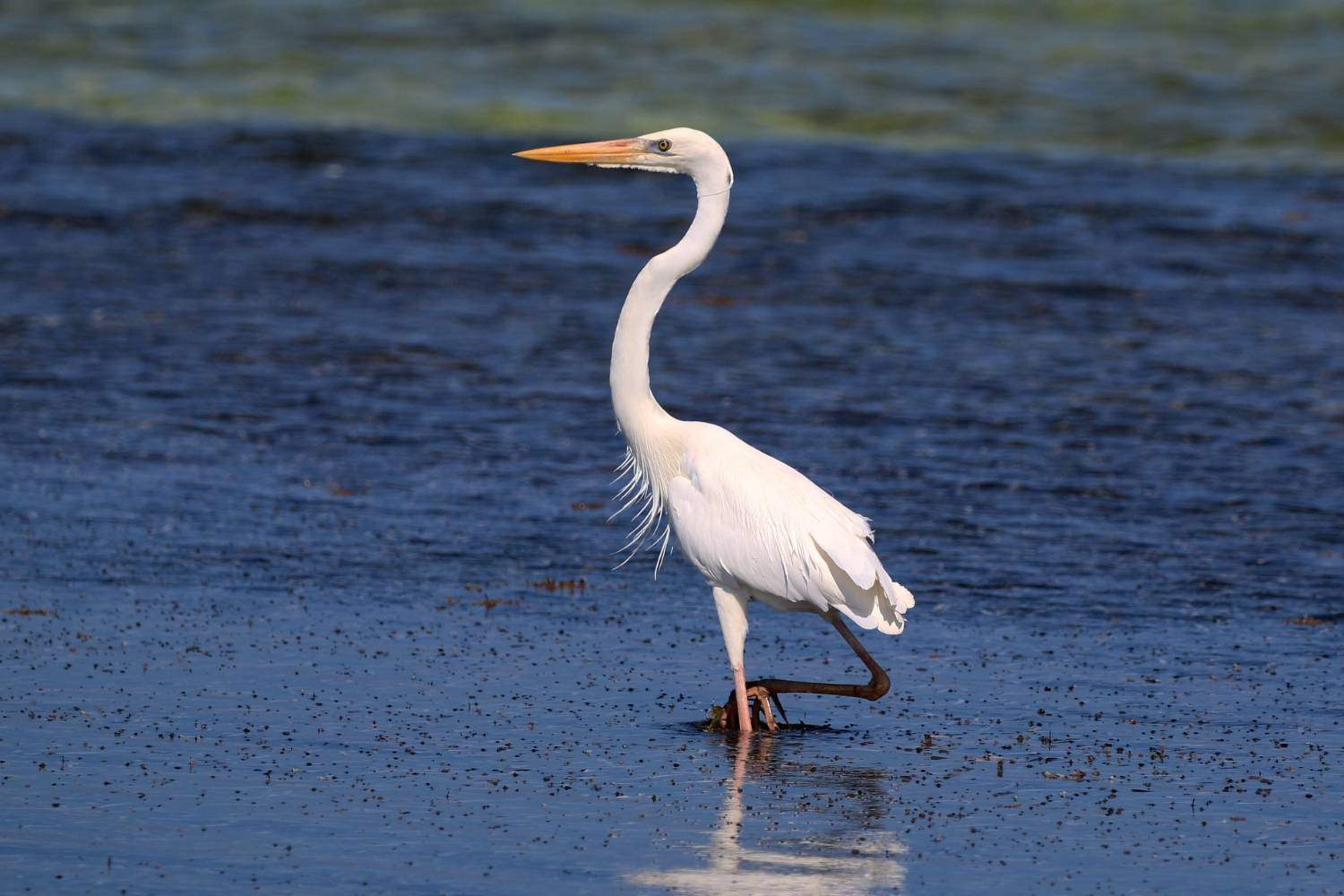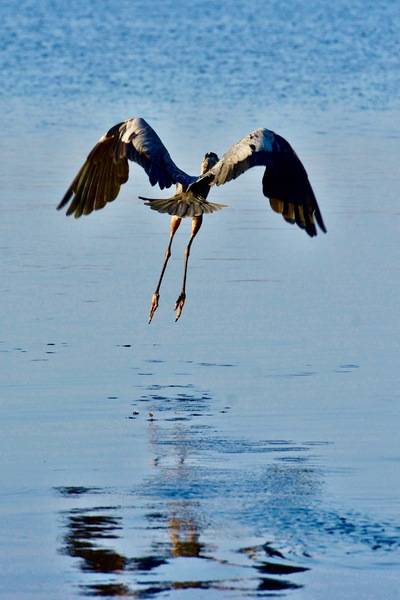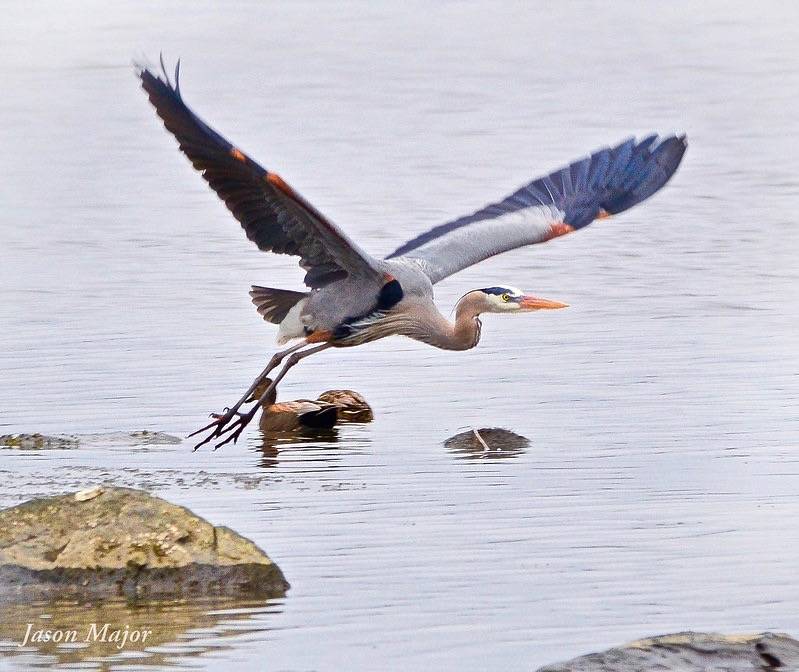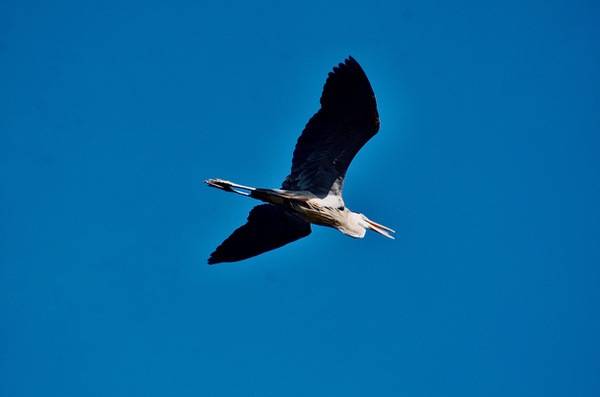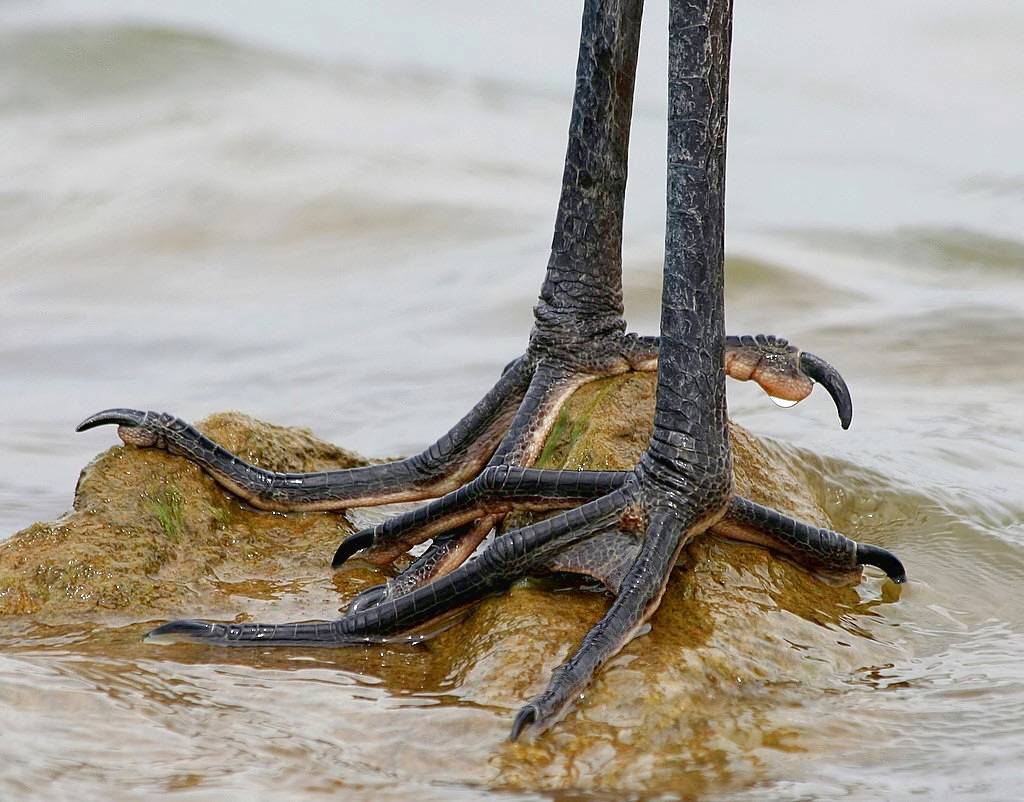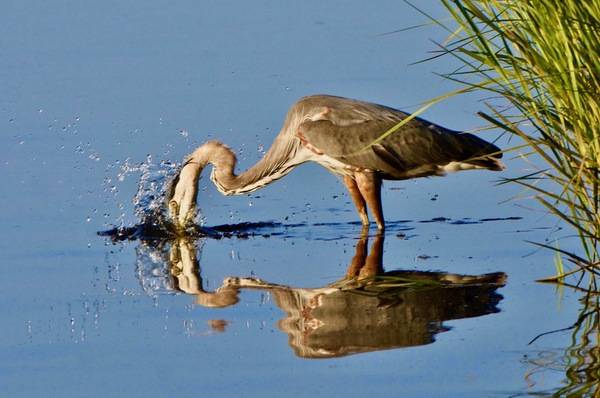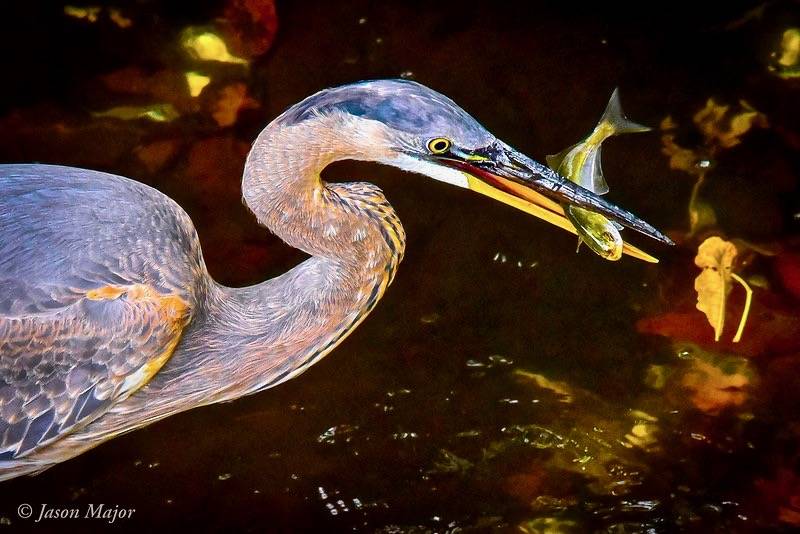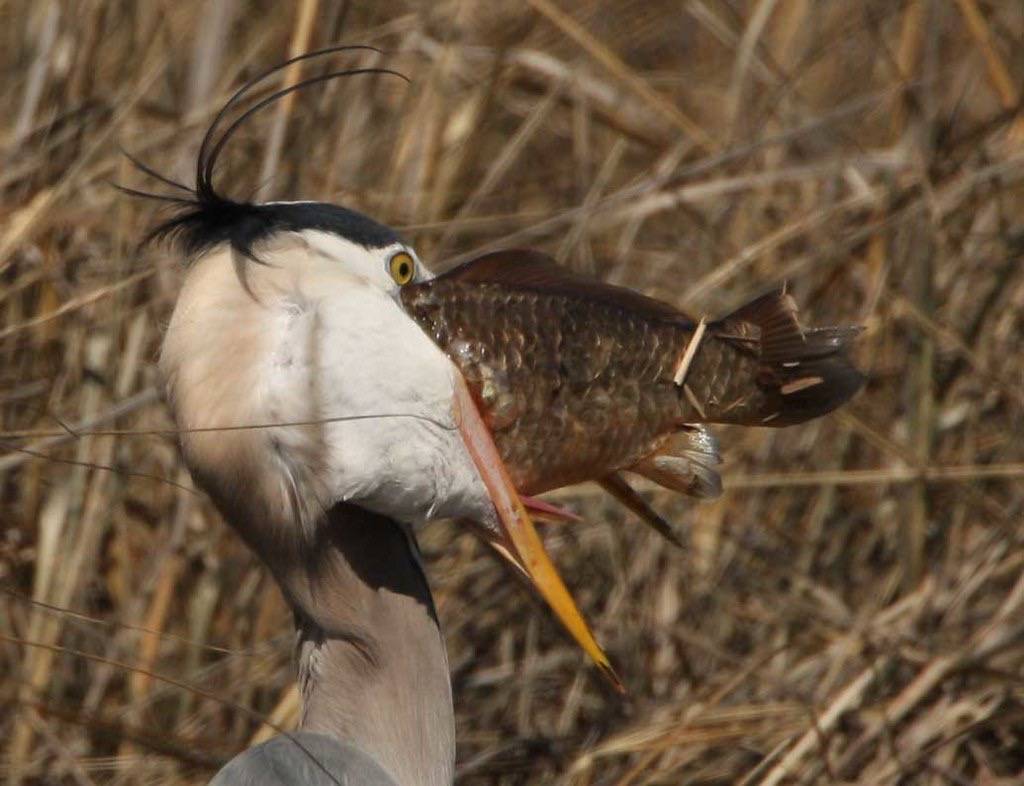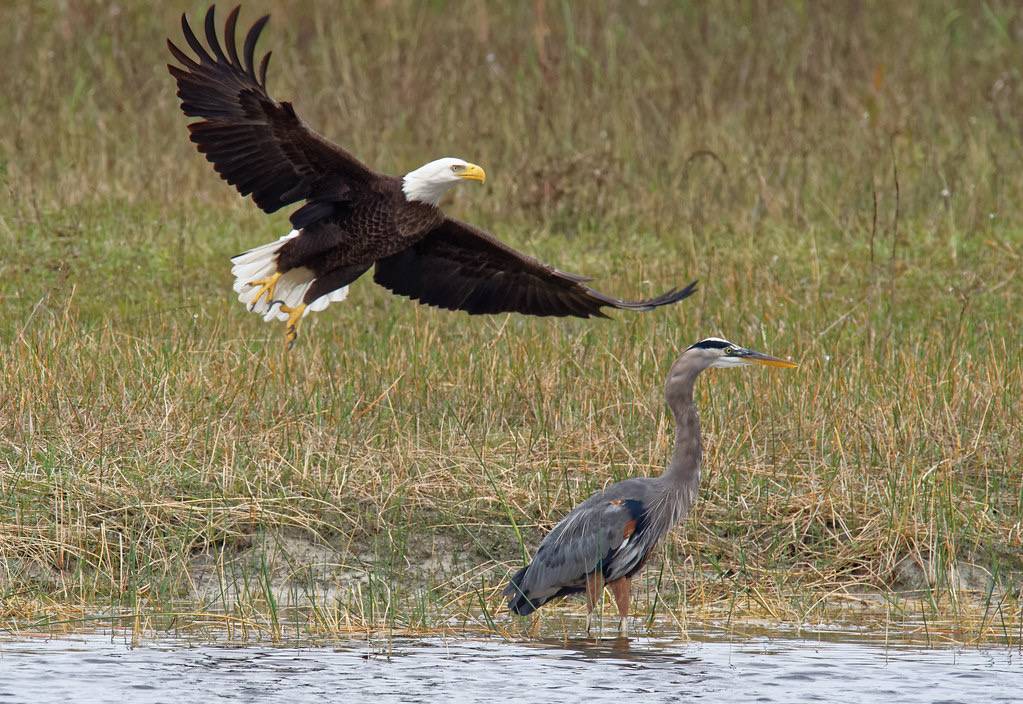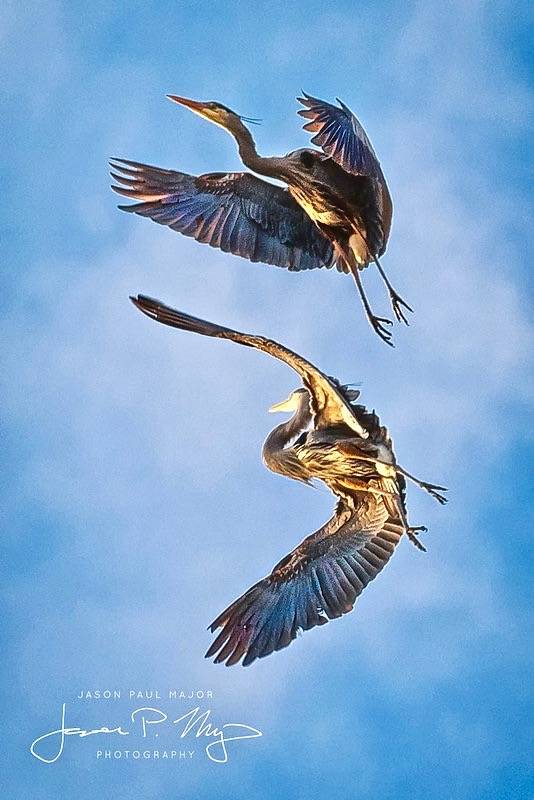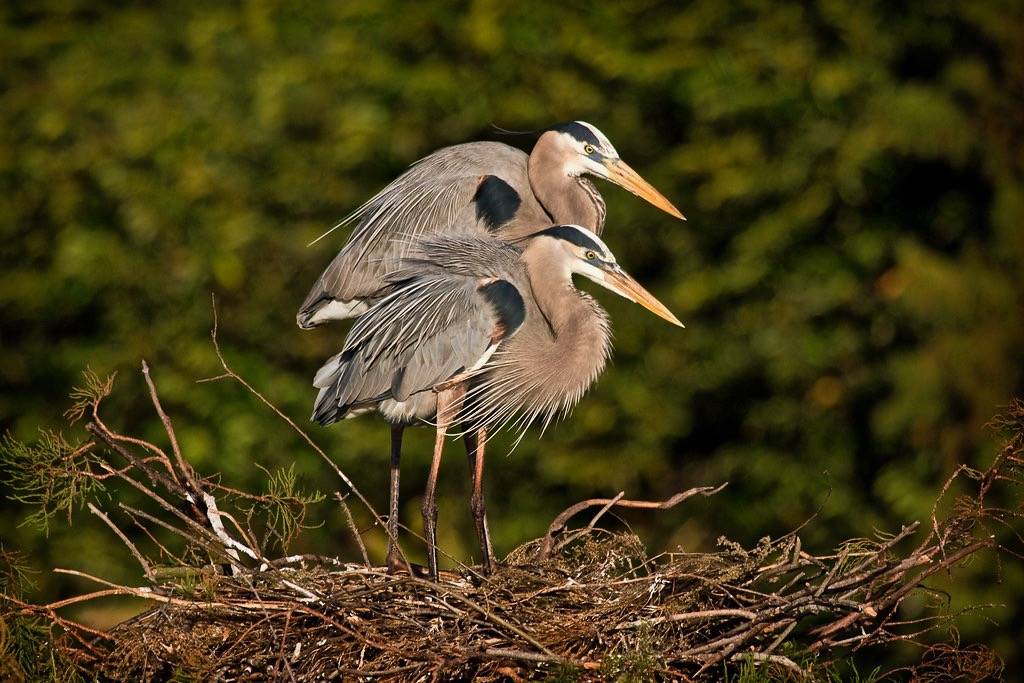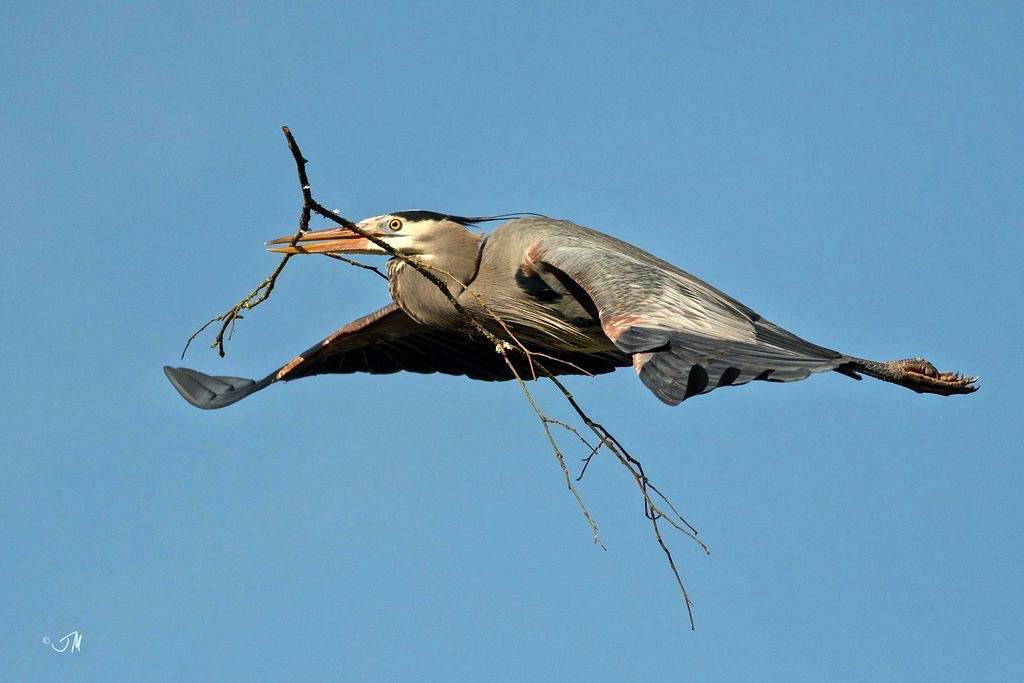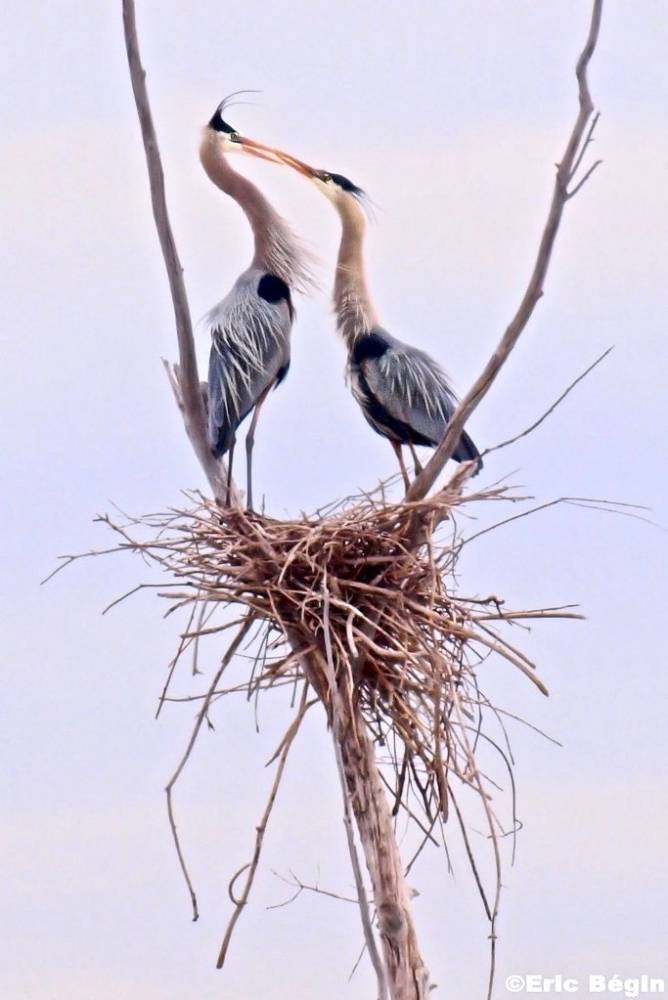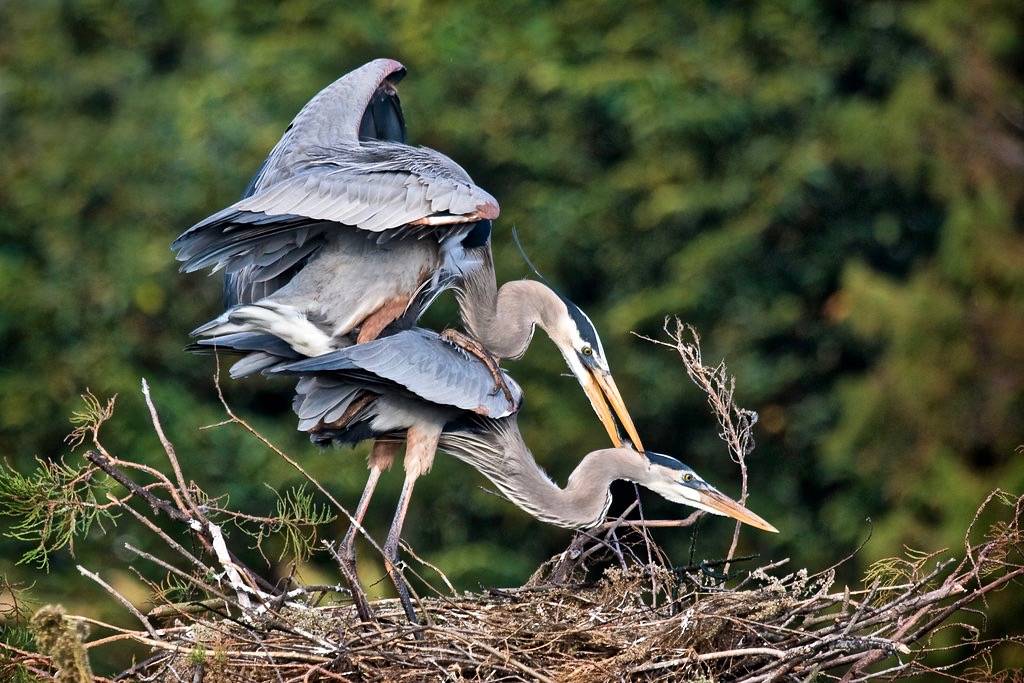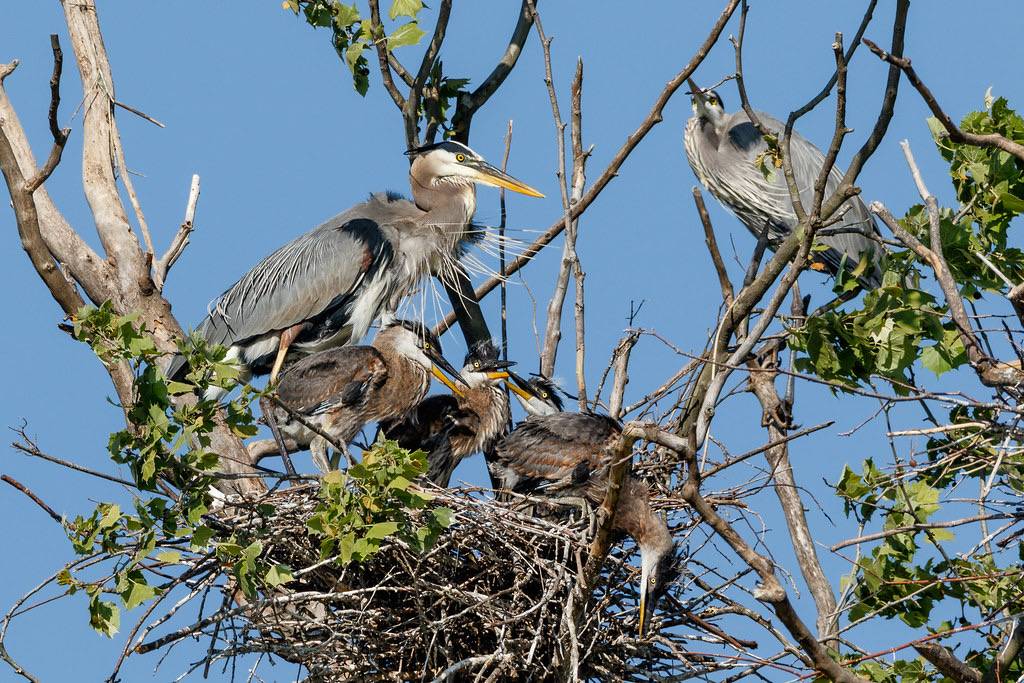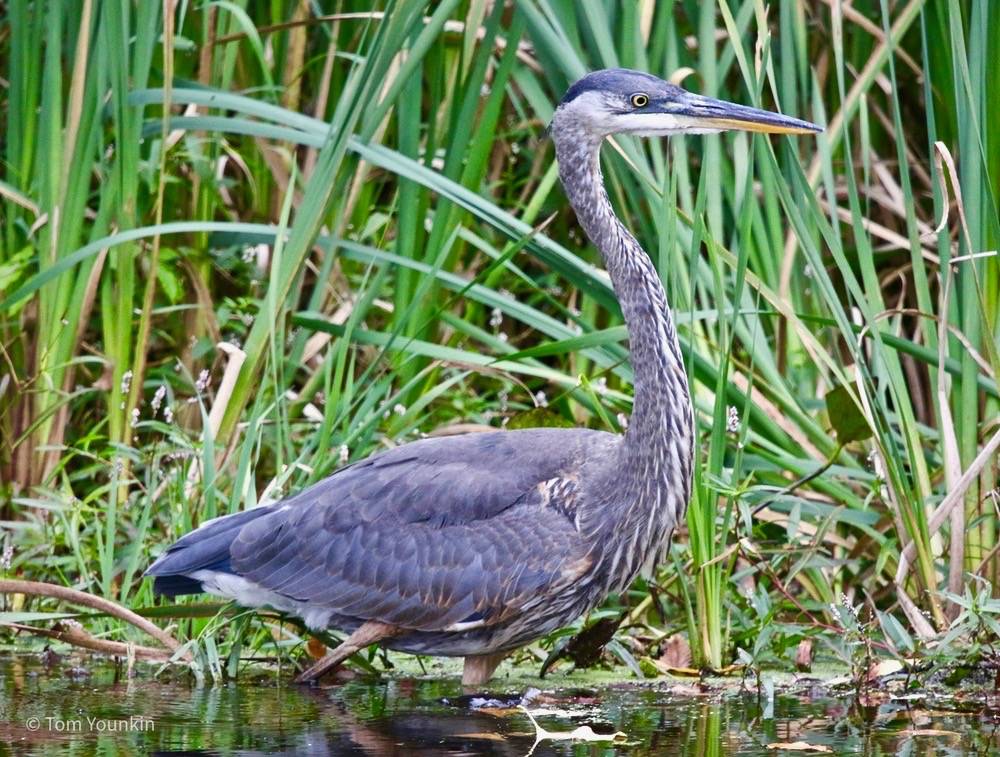Great Blue Heron
The Great Blue Heron is the largest heron in North America and has been seen at Salter Grove in all months excepting December, with sightings more frequent during the warmer months. It does not breed in the park but roosting individuals have been startled from branches in tall trees around the parking lot, and along the Marsh and Upland Trails.
This long-legged stand-and-wait predator can be observed walking slowly or waiting patiently in shallow water along the shorelines within the park. Its long neck can strike with incredible speed to spear a passing fish.
Alternatively, it can be seen flying high overhead, leisurely flapping its large broad wings, enjoying the airspace of Salter Grove. Rarely heard, its raucous squawks belies the elegant and majestic appearance of this heron.
In South Florida, the white form of the Great Blue Heron might be confused with the somewhat smaller Great Egret. However, remember that the Great Blue Heron has yellow legs whereas the Great Egret has black legs.
Although the Great Blue Heron breeds in large colonies, it is a solitary feeder whether foraging in wetlands or agricultural fields. It preys upon amphibians, crustaceans, fish, reptiles, rodents, and small species of waterbirds. Its partially webbed feet and long toes make it easier to walk on muddy bottoms without sinking. It has benefited from the recovery of beaver populations because their dam-building activity has increased wetland habitats to yield plentiful prey.
Its breeding range in North America extends from southern Canada through the United States. Large colonies of several hundred pairs, or heronries, are established in wetland areas with tall trees. The large nests of sticks are repaired and reused each year, but usually with a different mate. Northern breeders migrate south as far as Central America and the Caribbean. Birds are resident year round at their breeding site if feeding areas within 2 to 4 miles remain ice-free through the colder months.


